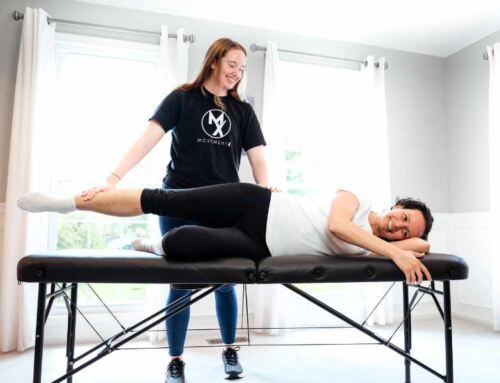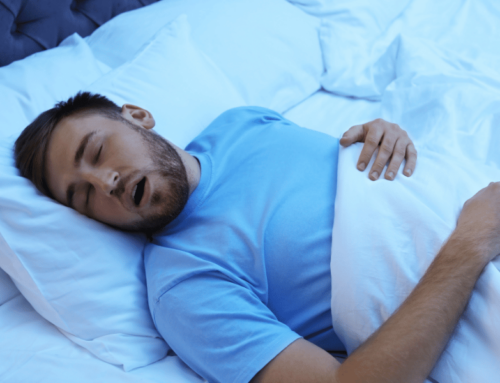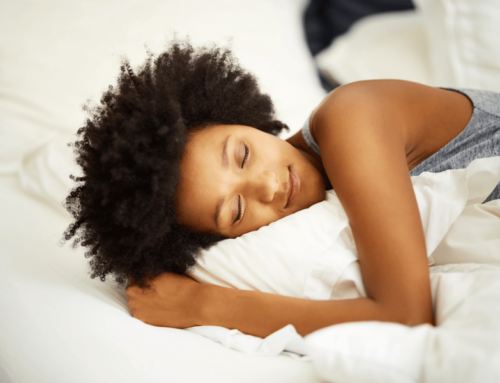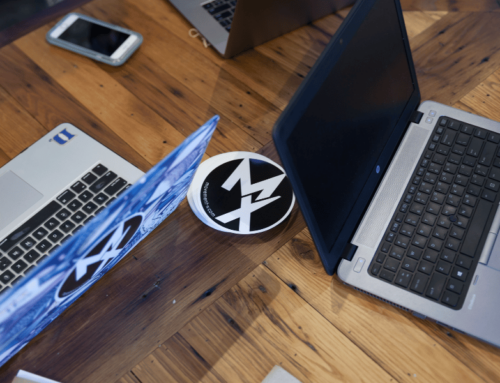
Top 4 Maneuvers for Vertigo Treatment at Home
Are you one of the 69 million Americans that have experienced vertigo or dizziness?
Experts have found that nearly 40% of U.S. adults experience vertigo-dizziness at least once in their lifetime (1). It is among the most common reasons that people seek medical consultation with their doctor and accounts for 2-3% of total visits to emergency departments (2).
The most common cause of dizziness and vertigo are vestibular disorders. 69 million Americans in the US (aged 40 years and older) have experienced some form of vestibular dysfunction (1). The vestibular system includes the parts of the inner ear and brain that process the sensory information involved with controlling balance and eye movements. The brain receives sensory information from our eyes, muscles and joints, and the vestibular organs in the inner ear. These 3 areas work together to help us stay balanced and not dizzy.
Thus, vestibular problems can present in many different ways. They can cause bouts of dizziness, vertigo, difficulty standing up, blurred vision, disorientation, falling or difficulty maintaining balance.
In this article, we’ll learn more about vertigo, review its common causes, and discover how working with a physical therapist can teach you special maneuvers and home exercises to support your recovery and reach your movement goals.
What is Vertigo?
Vertigo is a type of dizziness described as a sensation that you, or the environment around you, is moving or spinning. It is actually a symptom of a problem, not a condition itself, despite its misuse as a diagnosis. The most common cause of vertigo is a vestibular disorder in the inner ear called Benign Paroxysmal Positional Vertigo, or BPPV, for short. It is also the most commonly diagnosed vestibular disorder, and it is estimated to affect roughly 50% of all people at some time in their lives. It becomes progressively more common with age, and women and elderly individuals are slightly more likely to get it than men (1-3).
What Causes Vertigo?
Your vestibular system is located in the inner ear and tells the brain where you are relative to your surroundings. It is responsible for helping you maintain your balance and have clear vision as your body and head move. If the vestibular system is damaged due to illness, injury, or aging, you can experience vertigo (spinning dizziness), other types of dizziness, imbalance, disorientation, blurred vision, and falls. Symptoms that also prevent you from performing your normal daily activities.
Certain medications, inflections, dislodged calcium debris in the inner ear organs, as well as poor ear circulation, traumatic brain injuries, autoimmune disorders, and other conditions can all cause vestibular disorders. After pregnancy, postpartum vertigo can also develop.
The most common type of vestibular disorder is benign paroxysmal positional vertigo (BPPV), which occurs when tiny calcium crystals become loose and then move inside the very sensitive balance organs, called the semicircular canals, as you move around or change positions. These calcium debris stimulate the sensitive canals and cause a spinning sensation (vertigo) when the head changes position relative to gravity. This vertigo sensation can be mild to severe and may last seconds, or up to 1 minute. Most commonly, the positions that trigger positional vertigo when BPPV is present are: lying down flat on your back, lying on your side, rolling over in bed, looking up as if reaching into a cabinet or shelf, and bending forward with your head down.
BPPV = BENIGN • PAROXYSMAL • POSITIONAL • VERTIGO
* Benign: means it is not life-threatening
* Paroxysmal: means that it comes in sudden, brief spells
* Positional: means that it gets triggered by certain head positions or movements relative to gravity
* Vertigo: means a false sense of rotational movement

Positional Vertigo Treatment Exercises
While BPPV can be very debilitating and is the most common cause of vertigo, it’s also the easiest to treat.
Vestibular Rehabilitation therapy (VRT) includes a few strategic movements that work to reposition the calcium crystals, or canaliths, in your ear and eliminate your vertigo symptoms.
If performed properly, these simple maneuvers are extremely effective to treat positional vertigo at home. However, if you have trouble moving on your own due to stiffness, an injury, or another health condition, if you have restricted movement or pain in your neck or back, a, recent neck surgery or injury, connect with a physical therapist near you before you do any self-treatment to help you assess if you are a candidate for these maneuvers.
Most importantly, if you don’t feel you can perform these maneuvers exactly as instructed, have a specially trained physical therapist or other health care professional evaluate you to identify the correct ear and canal(s) affected, determine the type of BPPV you have, and then perform the appropriate treatments properly. In some cases, if the maneuvers are not done correctly, the calcium crystal debris can be converted from one canal into another canal, which could make your symptoms worse and much more difficult to resolve.
Before You Perform Treatments for Vertigo
It is important and very helpful to try and determine which ear is affected by the BPPV in order to perform the treatment to the correct side and resolve symptoms more quickly. You can usually determine the side (which ear) that is involved when movements like rolling over in bed, getting up out of bed, laying on your side) toward that direction provoke your symptoms of vertigo. For example:
If rolling to your right side, getting out of bed toward your right side or laying on your right side provokes the sensation of vertigo lasting less than a minute, most commonly, it is your right ear that is affected.
If you are unsure of which side is affected, it’s best to see a trained healthcare provider who specializes in evaluation and treatment of vestibular disorders to determine the location and type of BPPV you are experiencing.
The following maneuvers are all for the most common type of BPPV which affects the “PC” or posterior canal. There are also treatments for the less common types of BPPV that can occur, but again, I recommend going to a specially trained health care provider for these as it is harder to identify these types of BPPV and these treatments are more difficult to perform.

The Epley Maneuver
The Epley maneuver is the gold standard treatment for vertigo caused by BPPV (clinical practice guidelines). It is something you can do every day, in the morning or at night, until you’ve gone 48 hours without experiencing any vertigo. It is best to perform in the morning upon waking and prior to getting out of bed to start your day.
How to Perform the Epley Maneuver at Home
Start by sitting upright in a bed, place a pillow flat on the mattress right behind you. When you lay back down, the pillow should sit right under your shoulders and allow your head and neck to be positioned slightly below horizontal.
Turn your head 45 degrees to whichever side you are experiencing the vertigo on. For example, if your vertigo is coming from your left ear, you will turn your head 45 degrees to the left.
With your head still turned, quickly lie back on to the pillow and allow your head to extend backwards and rest on the mattress. Stay here until vertigo/dizziness stop and then wait an additional 30 seconds.
Keeping your neck extended and your head down below the horizontal, turn your head 90 degrees to the other side. If you started on your left side, your head should now be flat against the mattress on your right side. Wait until dizziness subsides (if any) plus another 30 seconds.
Now, turn your head and body in the same direction you just moved (if the vertigo is in your left ear, this will be toward your right side again) Once you are on your right side, turn your head further to the right so that your nose is pointing downward into the mattress. Wait here until dizziness subsides, plus 30 more seconds.
Slowly sit up from this position, keeping your head turned toward the right side and your chin close or resting on your right shoulder. I usually recommend waiting in this sitting position with your head still for about 10 minutes before getting up and continuing with your day.
If your vertigo occurs when moving or rolling over toward your right ear, you can perform the maneuver for the right side by alternating the direction of your head (starting with your head turned toward the right, turning left, then rolling to your left side again as stated in the directions above).
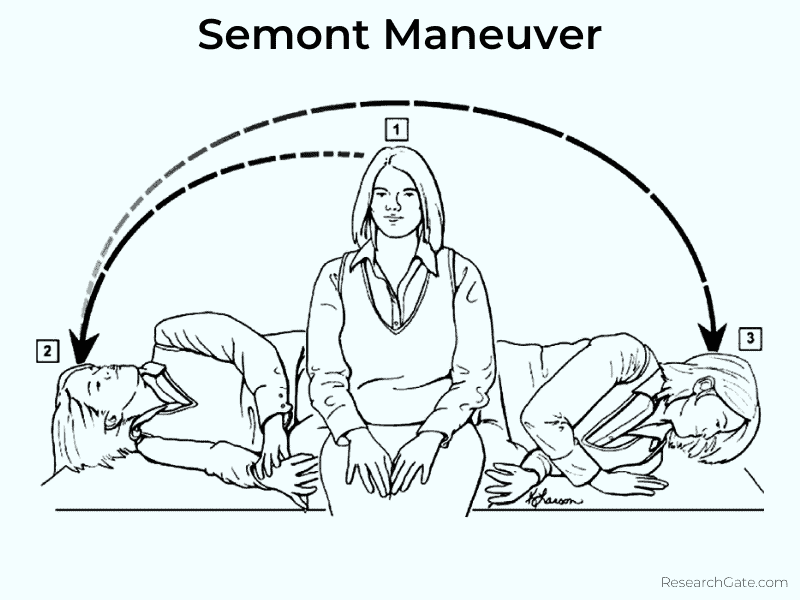
The Semont Maneuver
If your vertigo/dizziness lasts a minute or longer, then the Semont Maneuver might be more effective to use than the Epley maneuver. THe Epley maneuver is better for resolving BPPV that causes symptoms lasting less than one minute.
So how can you tell how long the vertigo is really lasting?? Those of you who have experienced vertigo already know that even just a few seconds of spinning dizziness can feel like an eternity. It’s often difficult for you to know exactly how long your vertigo lasts when triggered. It’s best to try and time how long your symptoms last with a stopwatch or using your smartphone, or ask a family member to do it for you to know for sure to determine if the Semont Maneuver is right for you.
This maneuver is more complicated to perform on your own than the Epley maneuver. So if you are not comfortable doing this method at home, or are unable to move quickly into the positions needed for the treatment, connect with a physical therapist near you to help move you through this maneuver.
The Semont maneuver can be done up to three times per day until vertigo symptoms subside.
How to Do the Semont Maneuver at Home
Sitting on the edge of your bed, with your legs hanging off the side, turn your head 45 degrees away from the side affected by vertigo.
Quickly move to a lying position on the affected side so that you are now looking at the ceiling and the back of your head is resting on the mattress . Stay in this position for 30 seconds.
Without changing the positioning of your head, quickly move to a lying position on the opposite end of the bed so that you are now face down with your nose on the mattress. Stay in this position for another 30 seconds.
Return to a normal sitting position and wait a few minutes for any dizziness to resolve before standing up or continuing with your day.

The Foster Maneuver
The Foster maneuver, also known as the half somersault, is another very popular maneuver to treat BPPV. Dr. Foster’s youtube video of her maneuver has been viewed millions of times by people suffering from BPPV. However, it has also been found in the research to be less effective than the self-Epley maneuver for resolving vertigo, and is much harder to perform.
In my personal experience as a vestibular therapist, I have found that for most of my patients, the Foster maneuver can be very difficult to perform, so as a home exercise, I teach the self-Epley and Semont maneuvers much more often. For certain people, the Foster can even be too dangerous to perform alone at home. This is especially true for someone who has trouble moving around independently or has severe vertigo symptoms. This maneuver requires more strength and flexibility to perform than the self-Epley maneuver and because it requires kneeling down on the floor or bed, someone who is unable to transfer safely into these positions is at risk for injury. Also, those who become severely dizzy or off-balance while trying to maintain the positions needed to complete the treatment, can be at greater risk of falling over.
The maneuver also requires you to be able to assume the initial half somersault position, and so cannot be used by patients of excessive body weight, with knee, neck or back injuries, or with impaired flexibility as noted in Dr. Foster’s 2012 article.
You may need to repeat this maneuver a few times to experience relief. Its best to wait 15 minutes between attempts to allow particles to settle if doing the maneuver more than once.
How to Perform the Foster’s Maneuver at Home
Start in a kneeling position with your hands on the floor. Tilt your head up towards the ceiling. If you experience any dizziness, pause until vertigo passes.
Next, place your head on the floor upside down, as if you are about to do a somersault. Tuck the chin so that your head touches the floor near the back of the head rather than near the forehead. This position may cause a burst of vertigo. Without moving, wait until any vertigo ends. Tapping firmly on the skull with your fingertips just behind the right ear can help move the particles along.
Now, turn your head 45 degrees towards your affected ear( turn your head to face your right elbow). Again, wait for any vertigo to end before moving to the next step, at least 30 seconds.
Keeping your head turned at the 45-degree angle, quickly raise your head until it’s level with your back and your shoulder blades. Vertigo is normal during this part of the procedure. Wait for the vertigo to end or count 30 seconds before continuing.
With your head still turned 45 degrees, quickly raise your head into a fully upright position. Some additional vertigo may occur. After the vertigo subsides, slowly sit upright and return your head to center. Wait 30 seconds before continuing with your day.
If you need to repeat this process, either on the other side or for further relief, wait 15 minutes before attempting again.
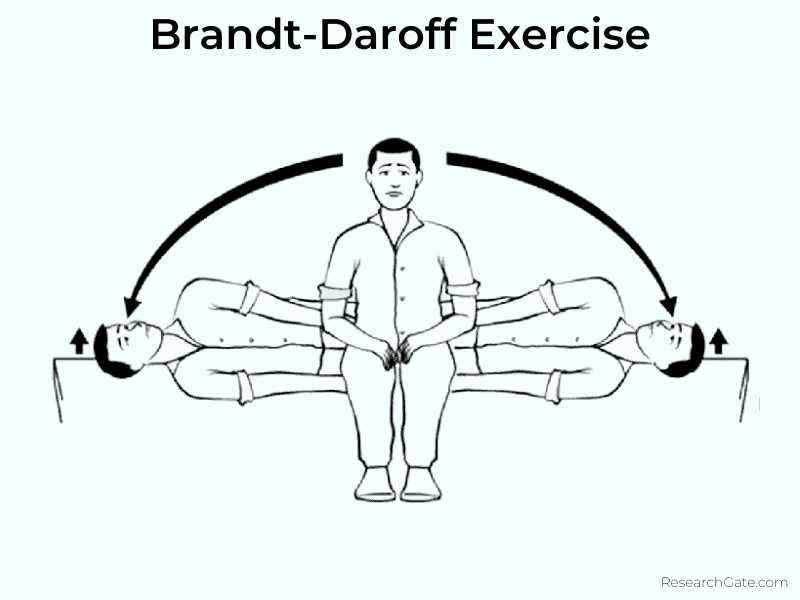
The Brandt-Daroff Exercise
Brandt-Daroff exercises were initially introduced to treat BPPV in 1980.
They have since been found in the research to be inferior to the gold standard treatment of the Epley maneuver for effectively treating vertigo caused by BPPV.
However they can be very effective as an alternative treatment when a patient cannot perform the EPley or Semont Maneuvers. Some patients are unable to tolerate or assume the positions necessary to perform the maneuvers/exercises above properly, or if you have another medical condition that makes the treatment contraindicated for you, Brandt Daroff is the alternative treatment you can try.
The Brandt-Daroff exercise can be done up to five times in a session, and it is recommended to perform up to three sessions a day for two weeks for best results.
Sitting in an upright position on the edge of a couch or bed, turn your head 45 degrees away from the side where you are experiencing vertigo.
While holding this head-turned position, quickly lay down on your side, away from the direction your head is turned, resting the back of your head on the mattress, and looking up towards the ceiling. Wait in this position until your vertigo goes away and then an additional 30 seconds.
Return to a seated position again while maintaining your head position. Wait in this position until your vertigo goes away and then an additional 30 seconds.
Now, repeat the same motions stated above on the opposite side, turning your head 45 degrees towards your affected side, quickly laying down resting the back of your head on the mattress and looking up towards the ceiling, waiting for vertigo to stop and then 30 seconds more, and returning to seated.
Repeat this exercise a total of five times per side.
Wait for any dizziness to pass before returning to daily activities.
Conclusion
There are many, many maneuvers out there to treat different types of BPPV. The maneuvers in this article are the most current, effective, and most popular treatments for the most common type of BPPV which affects the posterior semicircular canal in the inner ear. If you have BPPV, you are not alone. The good news is that BPPV is very successfully and effectively treated with the appropriate mechanical maneuvers performed by a qualified healthcare professional who is appropriately trained in the assessment and treatment of BPPV. You can also be taught how to perform these treatments yourself at home to resolve vertigo and return to your daily activities without dizziness or imbalance. This is important for managing BPPV when it returns in the future. Despite treatments for BPPV being very effective, it often recurs. Once an episode of BPPV is resolved, some people have residual dizziness (usually not the spinning type) and imbalance due to an underlying problem in the ear or brain and may benefit from additional vestibular exercises. A specially trained physical therapist can evaluate you and let you know if you would benefit from additional treatment beyond the maneuvers used to resolve BPPV in these cases.
If you or someone you know is suffering from BPPV, if you are unable, or are struggling with doing these vertigo treatments by yourself at home, sign up now to request care with a specialist who can treat your needs. Receive care at home, in your office, at the gym, or stop by one of our local clinics. It’s always best to have a specially trained physical therapist perform the correct maneuver properly for you to resolve the problem quickly and effectively. This way you can avoid injuring yourself, or making the BPPV worse by treating the wrong side, or moving the crystals into an additional canal which makes it more difficult to resolve and results in the symptoms becoming much worse.
At MovementX, our highly specialized physical therapists and personal trainers are here to support you on your journey towards better movement health.
Connect with a MovementX provider today.
References:
- Vestibular dysfunction: Prevalence, impact and need for targeted treatment. Yuri Agrawal, Bryan K. Ward, and Lloyd B. Minor Vestib Res. 2013; 23(3): 113–117. doi: 10.3233/VES-130498
- Kerber KA, Meurer WJ, West BT, et al. Dizziness presentations in US emergency departments, 1995-2004 . Acad Emerg Med. 2008;15:744–750.
- Newman-Toker DE, Hsieh YH, Camargo CA, Jr, et al. Spectrum of dizziness visits to US emergency departments: cross sectional analysis from a nationally representative sample . Mayo Clin Proc. 2008;83:765–775.
- Bhattacharyya N, Gubbels SP, Schwartz SR, et al. Clinical Practice Guideline: Benign Paroxysmal Positional Vertigo (Update). Otolaryngology–Head and Neck Surgery. 2017;156(3_suppl):S1-S47. doi:10.1177/0194599816689667
- Foster C, A, Ponnapan A, Zaccaro K, Strong D: A Comparison of Two Home Exercises for Benign Positional Vertigo: Half Somersault versus Epley Maneuver. Audiol Neurotol Extra 2012;2:16-23. doi: 10.1159/000337947
About the Author
Dr. Janine DeBrito is a physical therapist and vestibular specialist with MovementX in the Boca Raton area of South Florida. With over 17 years of clinical experience, Janine DeBrito helps patients with a variety of neurological and vestibular diagnoses, such as migraines, BPPV, dizziness, vertigo, imbalance, and other disorders. She enjoys horseback riding, soccer, hiking, running, biking, music, and the beach.



